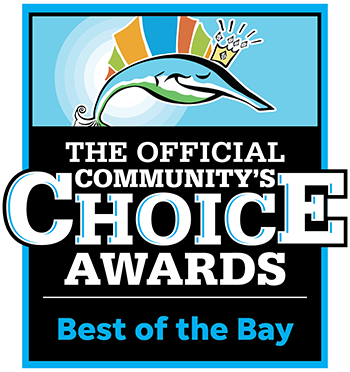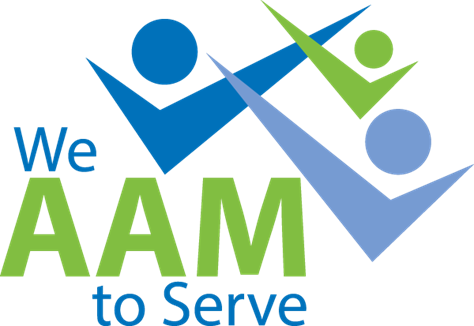Alphabet Soup of Estate Planning
3/25/2025 - By Julie Edwards, CPA and David Uslan, CPA
Estate planning is filled with an abundance of acronyms and terms that can be quite perplexing at first glance, but with a bit of guidance and explanation, they can become much more manageable. Understanding these acronyms is crucial for navigating the intricacies of estate planning as well as making well-informed decisions. Since the process can be quite complex, it’s helpful to have all the definitions in one accessible place.
What is CLT?
CLT, which stands for Charitable Lead Trust, allows individuals to support charitable organizations. The trust makes regular payments to one or more charities for a designated period. After the charitable term ends, the remaining assets in the trust are transferred to non-charitable beneficiaries, such as family members.
Types of Charitable Lead Trusts:
- CLAT, which stands for Charitable Lead Annuity Trust, provides fixed annuity payments to the charity.
- CLUT, which stands for Charitable Lead Unitrust, provides variable payments based on a fixed percentage of the trust’s annually revalued assets.
What is CRT?
CRT, which stands for Charitable Remainder Trust, allows individuals to donate assets to a charity while providing income for themselves or other beneficiaries. The trust provides regular income payments to one or more non-charitable beneficiaries for a specified period or for their lifetimes.
Types of Charitable Remainder Trusts:
- CRAT, which stands for Charitable Remainder Annuity Trust, pays a fixed amount annually, which is a percentage of the initial value of the trust assets.
- CRUT, which stands for Charitable Remainder Unitrust, provides variable payments based on a fixed percentage of the trust’s annually revalued assets.
What is Crummey Powers?
Crummey powers, named after Clifford Crummey, who first used this technique in the 1960’s, allows beneficiaries to have a temporary right to withdraw contributions to a trust. This right to withdraw is what makes the contributions eligible for the annual gift tax exclusion.
What is Decanting?
Decanting is the process of transferring assets from one trust to another, typically a new trust with different terms. This is done to modify the trust’s provisions without having to go through a formal modification process or court proceedings. By decanting, trustees can take advantage of new tax laws and strategies that may not have been available when the original trust was created.
What is DAF?
DAF, which stands for Donor-Advised Fund, is a 501(c)(3) organization where individuals can “bunch” their contributions in one year to receive an immediate tax deduction. They then maintain the ability to advise where those funds are distributed at a later time.
What is DPOA?
DPOA, which stands for Durable Power of Attorney, is a legal document that allows individuals to appoint someone primarily to manage their financial and legal affairs if an individual becomes incapacitated. A DPOA can also be used to manage real estate matters, business operations, and personal care.
What is DSUE
DSUE, which stands for Deceased Spousal Unused Exclusion, is the amount of the unused portion of a deceased spouse’s estate tax exemption that is transferred to the surviving spouse under portability. To claim the DSUE, an estate tax return (Form 706) must be filed by the deceased spouse’s estate within five years of their death but should be filed as soon as possible.
What is GRAT?
GRAT, which stands for Grantor Retained Annuity Trust, allows a grantor to transfer assets to a trust while retaining the right to receive fixed annuity payments for a specified term, typically 2 to 10 years. After the term ends, any remaining assets in the trust pass to the designated beneficiaries.
What is GRIT?
GRIT, which stands for Grantor Retained Income Trust, allows a grantor to transfer assets into a trust while retaining the right to receive income from those assets for a specified term. After the income retention period ends, the trust assets that remain are passed to the designated beneficiaries.
What is GRUT?
GRUT, which stands for Grantor Retained Unitrust, allows a grantor to transfer assets into a trust while retaining the right to receive annual payments based on a fixed percentage of the trust’s revalued assets each year. Similar to a GRIT, after the income retention period ends, the trust assets that remain are passed to the designated beneficiaries.
What is HEMS?
HEMS, which stands for Health, Education, Maintenance, and Support, are guidelines used by trustees to determine how and when to distribute funds to beneficiaries. Trusts may allow a trustee to distribute money to beneficiaries for their health, education, maintenance, or support.
What is IDGT?
IDGT, which stands for Intentionally Defective Grantor Trust, is a type of irrevocable trust used to minimize estate taxes while allowing the grantor to retain certain tax responsibilities. The assets transferred to the IDGT are removed from the grantor’s estate. However, the grantor remains responsible for paying income taxes on the trust’s income. This “defect” in the trusts’ structure is intentional and allows the trust assets to grow tax-free for the beneficiaries.
What is ILIT?
ILIT, which stands for Irrevocable Life Insurance Trust, is specifically designed to hold and manage life insurance policies. With proper structuring, contributions to the ILIT to pay premiums can utilize the annual gift exclusion.
What is the Lady Bird Deed?
A Lady Bird Deed is a type of enhanced life estate deed that allows for property owners to retain control during their lifetime, while naming beneficiaries to inherit the property upon their death. This is a particularly useful tool for avoiding probate and is authorized in several states, including Florida. It is named after Lady Bird Johnson, the wife of President Lyndon B. Johnson.
What is Portability?
Portability allows a surviving spouse to utilize any unused portion of their deceased spouse’s federal estate tax exemption. This means that if one spouse does not fully use their estate tax
exemption, the remaining amount can be transferred to the surviving spouse. Consequently, the surviving spouse’s exemption amount is increased, enabling them to pass more assets onto their heirs without incurring estate taxes.
What is QPRT?
QPRT, which stands for Qualified Personal Residence Trust, allows the transfer of an individual’s primary or secondary residence into an irrevocable trust while retaining the right to live in the home for a specified period. After the retained interest period ends, the ownership of the residence transfers to the beneficiaries as “remainder interest”.
What is QTIP?
QTIP, which stands for Qualified Terminable Interest Property Trust, is designed to provide financial support for a surviving spouse while maintaining control over how the trust assets are distributed after the surviving spouse’s death. The assets are included in the surviving spouse’s estate when they pass away.
What is SLAT?
SLAT, stands for Spousal Lifetime Access Trust, allows one spouse to transfer assets into an irrevocable trust for the benefit of the other spouse. The beneficiary spouse can receive income and, in some cases, principal from the trust for their lifetime. The assets themselves are not included in the surviving spouse’s estate when they pass away.
What is TOD?
TOD, which stands for Transfer on Death, is a designation that allows you to pass assets directly to a designated beneficiary without going through probate court. A TOD designation can be added to various types of accounts such as bank accounts, real estate, and brokerage accounts.
What is UGMA?
UGMA, which stands for Uniform Gifts to Minors Act, allows financial assets such as cash, securities, and insurance policies to be gifted to a minor without establishing a trust. Once assets are transferred into a UGMA account, they cannot be reclaimed by the donor. When the minor reaches the age of majority, they gain full control over the assets. Additionally, earnings from these assets are taxed at the child’s tax rate.
What is UTMA?
UTMA, which stands for, Uniform Transfers to Minors Act, allows adults to transfer both financial assets and physical assets such as patents, real estate, or fine art, to a minor without establishing a formal trust. The UTMA offers more flexibility than UGMA by permitting a wider range of assets to be transferred. Like the UGMA, earnings from UTMA accounts are taxed at the child’s tax rate.
Understanding key acronyms, such as those listed here, can empower individuals to make informed decisions and ensure assets are managed and supported according to their wishes. Estate planning is an invaluable resource that, when understood, offers peace of mind for both individuals and their loved ones.
Questions?
Saltmarsh, Cleaveland, & Gund can provide expert advice and support to any client affected by this new ruling. Please don’t hesitate to reach out and schedule a call with one of our estate tax team experts.
About the Author | Julie Edwards, CPA & David Uslan, CPA
Julie is a supervisor in the Tax & Accounting Services practice of Saltmarsh, Cleaveland & Gund. She works with a wide range of industries, including construction, manufacturing and high-net-worth individuals.
David is a shareholder and technical leader of the Tax & Accounting Services practice at Saltmarsh, Cleaveland & Gund. With more than 30 years of experience, he works with high-net-worth individuals and growth-oriented companies in a variety of industries. Including software, real estate, private equity, professional services, technology and creative services.
Related Posts
- Alphabet Soup of Estate Planning
- Tariff Trepidation
- It's More Than 'Just a Phase'
- How to Avoid Black Swans
- An Investing Plan for This Year
- Demystifying Personal Injury Settlements: A Guide to Navigating Your Claim
- Reality Check: Capital Market Assumptions vs. Actual Returns
- The Power of Human Ingenuity
- 2024 Year in Review
- Feeling Generous? Secure Your Own Financial Well-Being First!
- Election Years & Their Impact on the Market: A Data-Driven Perspective
- The Unwinding of the Yen "Carry" Trade
- Preventing Identity Theft: Tips to Protect Yourself & Your Family
- Saltmarsh Financial Advisors Recognized as Top Wealth Advisory Firm by Accounting Today
- Father's Day: Money Lessons Learned From Dad
- What is Dollar Cost Averaging?
- Cost of Capital: A Gut Check on High-Flying Stock Returns
- A Closer Look at Today's Inflation (2024 Edition): Not Out of the Woods Yet
- Saltmarsh Hosts 'Building Confidence': A Women-Focused Event Series
- The Power of Compounding in Health and Wealth
- Exciting Returns May Not Be Expected Returns
- The Dos and Don'ts of Credit Cards: How to Use Them Wisely
- Dimensional Fixed Income Trading: Price Is Our Priority
- Magnificent 7 Outperformance May Not Continue
- Many Happy Returns
- View All Articles







